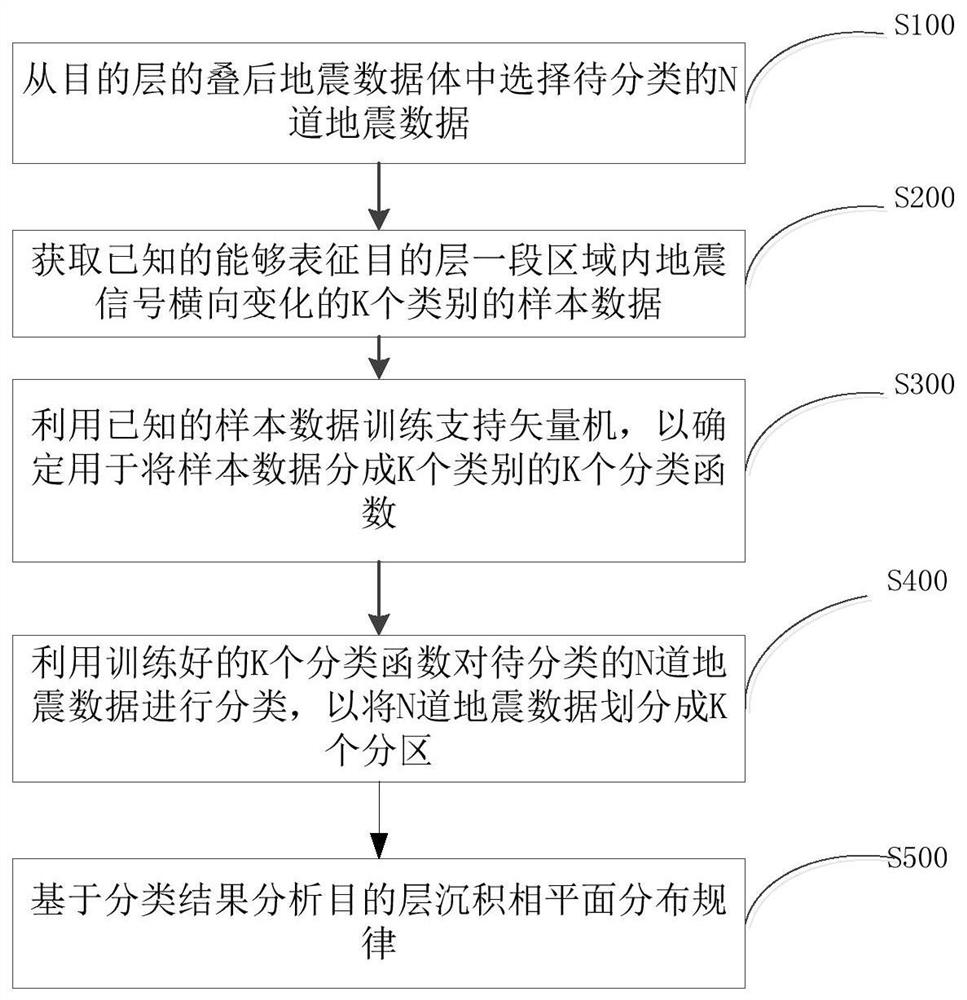Seismic facies analysis method based on support vector machine algorithm
A technology that supports vector machines and analysis methods, applied in the field of oil and gas and coalbed methane seismic exploration and development, and can solve problems such as low interpretation and identification accuracy
- Summary
- Abstract
- Description
- Claims
- Application Information
AI Technical Summary
Problems solved by technology
Method used
Image
Examples
Embodiment 1
[0049] Such as figure 1 Shown, the present invention proposes a kind of seismic facies analysis method based on support vector machine algorithm, mainly comprises the following steps:
[0050] S100, selecting N channels of seismic data to be classified from the post-stack seismic data volume of the target layer;
[0051] S200, acquire known K categories of sample data that can represent the lateral variation of seismic signals in a region of the target layer; where K≤N
[0052] S300, using known sample data to train a support vector machine to determine K classification functions for dividing the sample data into K categories;
[0053] S400, using the trained K classification functions to classify the N channels of seismic data to be classified, so as to divide the N channels of seismic data into K partitions;
[0054] S500, forming seismic facies based on the classification results, and analyzing the spatial variation of petrophysical parameters and sedimentary facies corresp...
Embodiment 2
[0056] The working process of the above-mentioned seismic facies analysis method based on the support vector machine algorithm will be described in detail below in conjunction with the embodiments.
[0057] Here, the purpose of the present invention is to divide the seismic data into K (K≤N) partitions under the condition of given N-channel seismic data set D and the number K of seismic facies to be distinguished, wherein, S k Represents the data set of each partition after partitioning, a partition is called a cluster, and each cluster represents a seismic facies.
[0058] First, for the post-stack seismic data volume of the target layer (time domain or depth domain), select the N-channel seismic data set D to be used for classification. Specifically, there are two ways to select: the first way is to give the center point and the size of the time window, and select the data block with the center point as the center of the time window and the size of the time window as the len...
PUM
 Login to View More
Login to View More Abstract
Description
Claims
Application Information
 Login to View More
Login to View More - R&D
- Intellectual Property
- Life Sciences
- Materials
- Tech Scout
- Unparalleled Data Quality
- Higher Quality Content
- 60% Fewer Hallucinations
Browse by: Latest US Patents, China's latest patents, Technical Efficacy Thesaurus, Application Domain, Technology Topic, Popular Technical Reports.
© 2025 PatSnap. All rights reserved.Legal|Privacy policy|Modern Slavery Act Transparency Statement|Sitemap|About US| Contact US: help@patsnap.com



